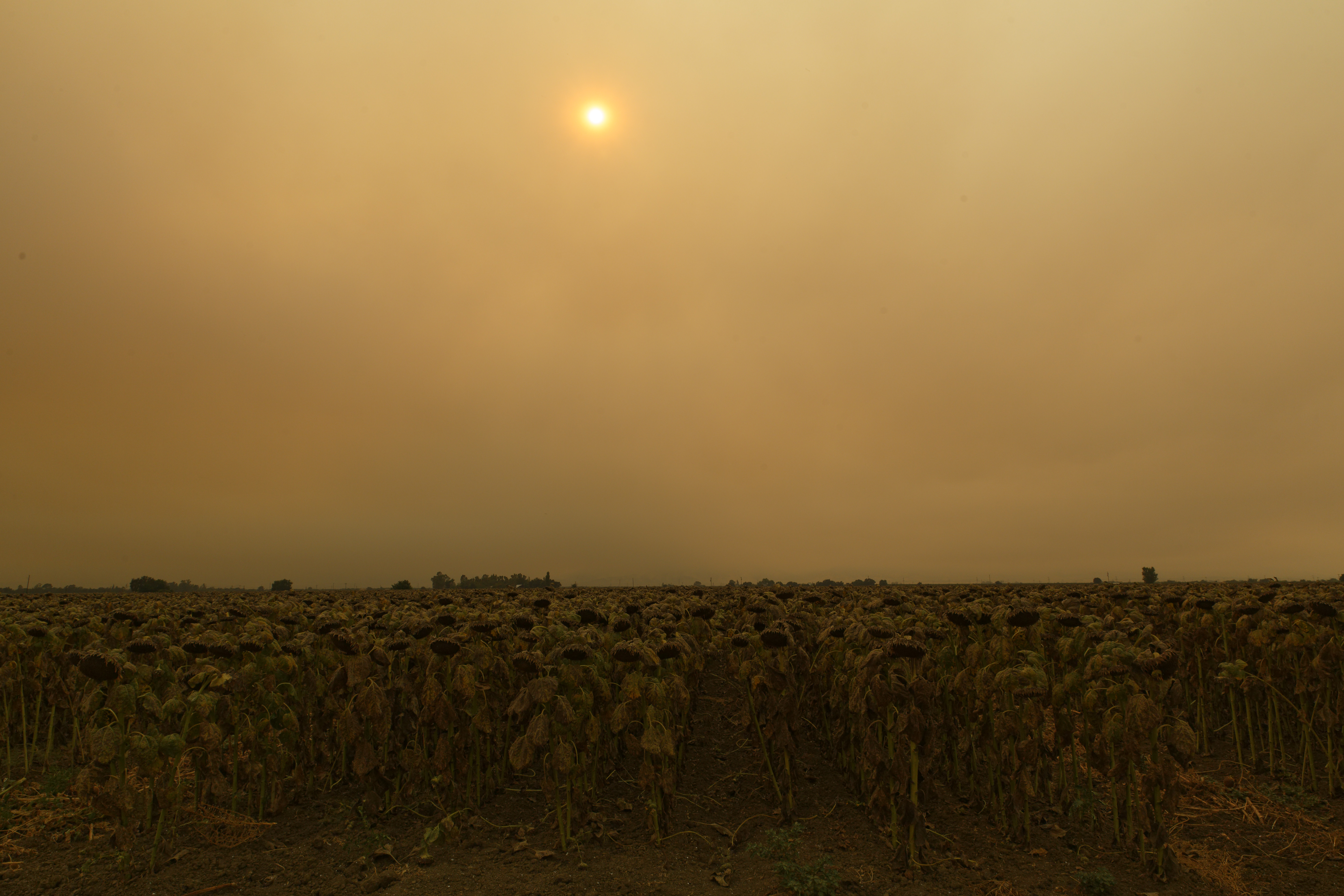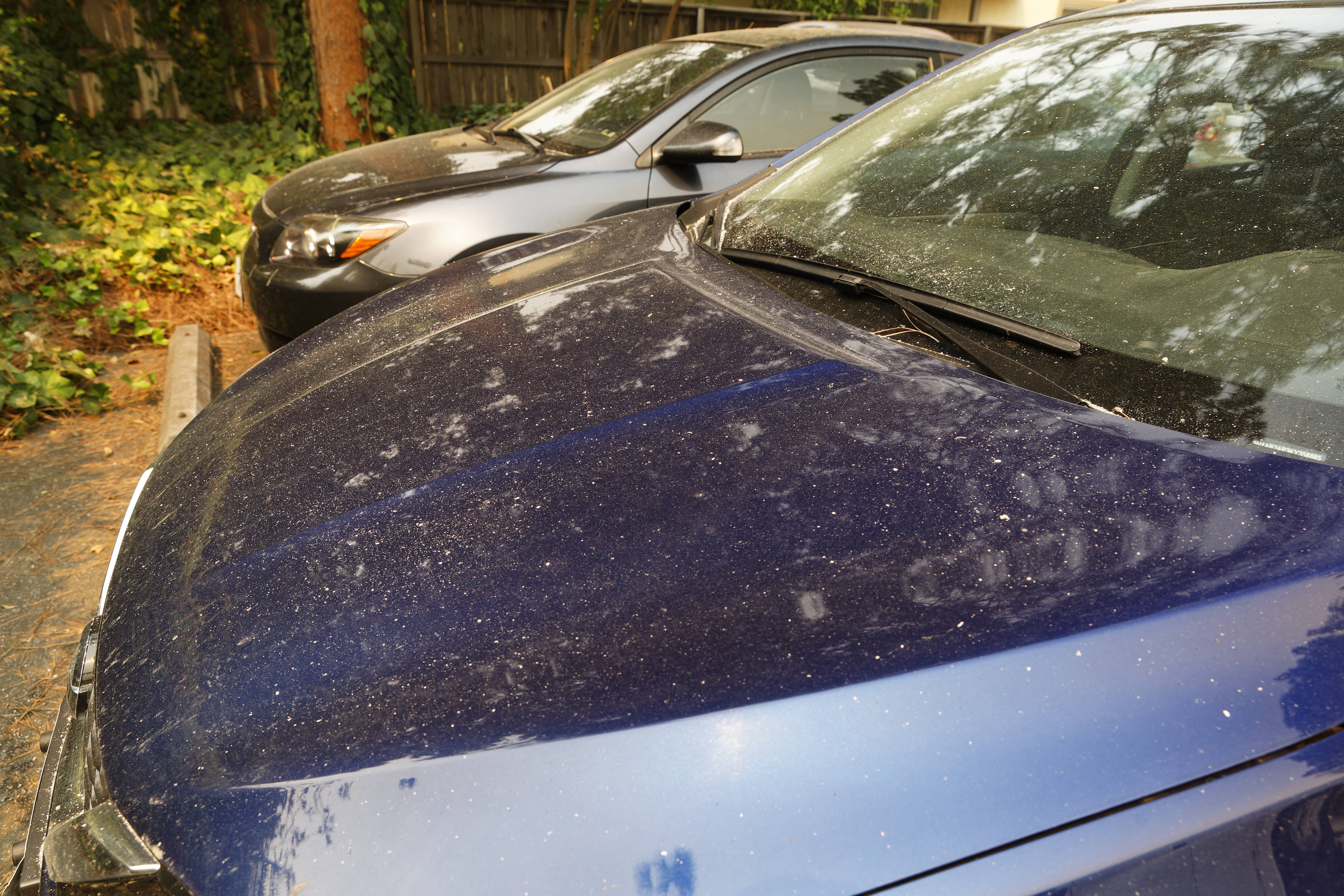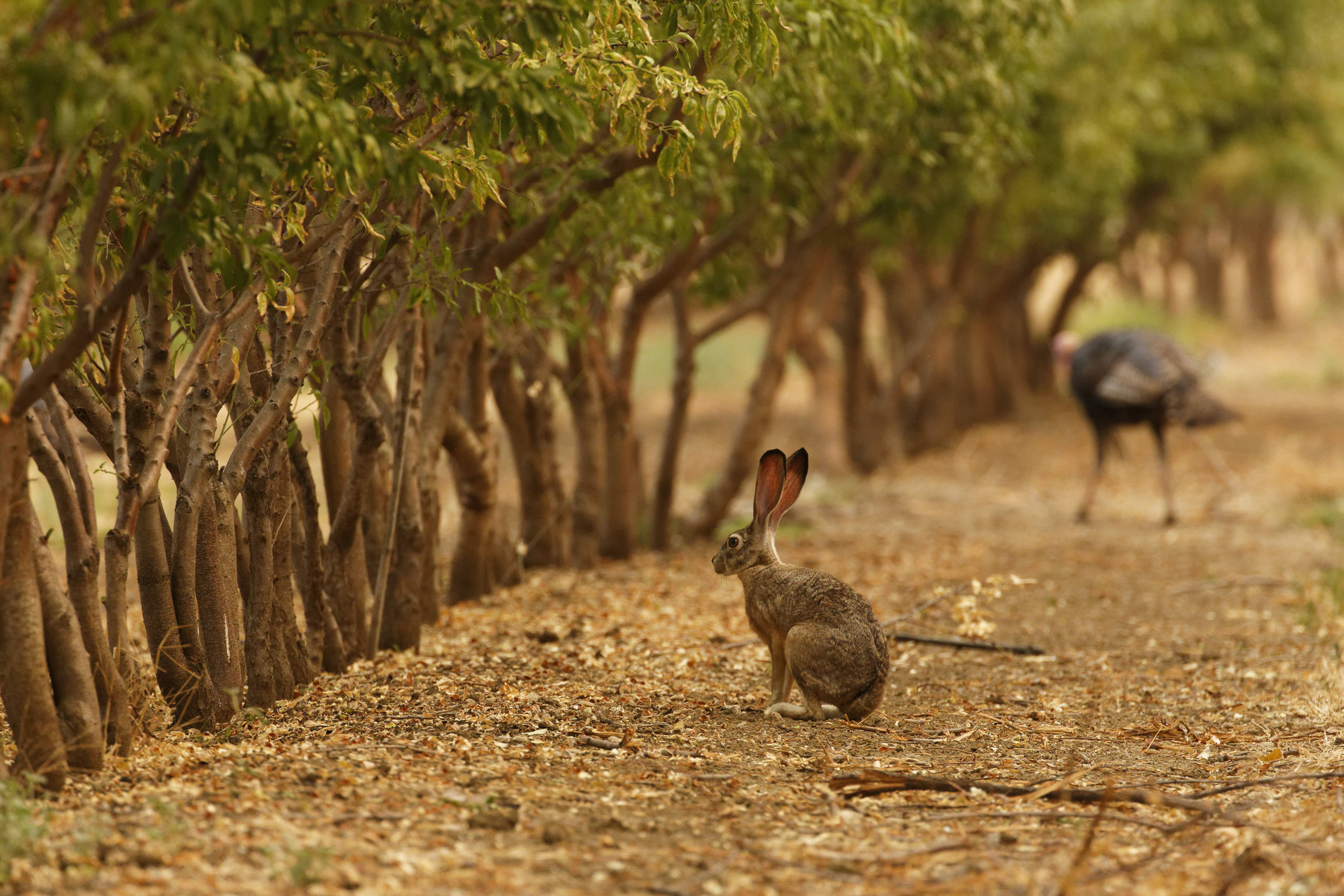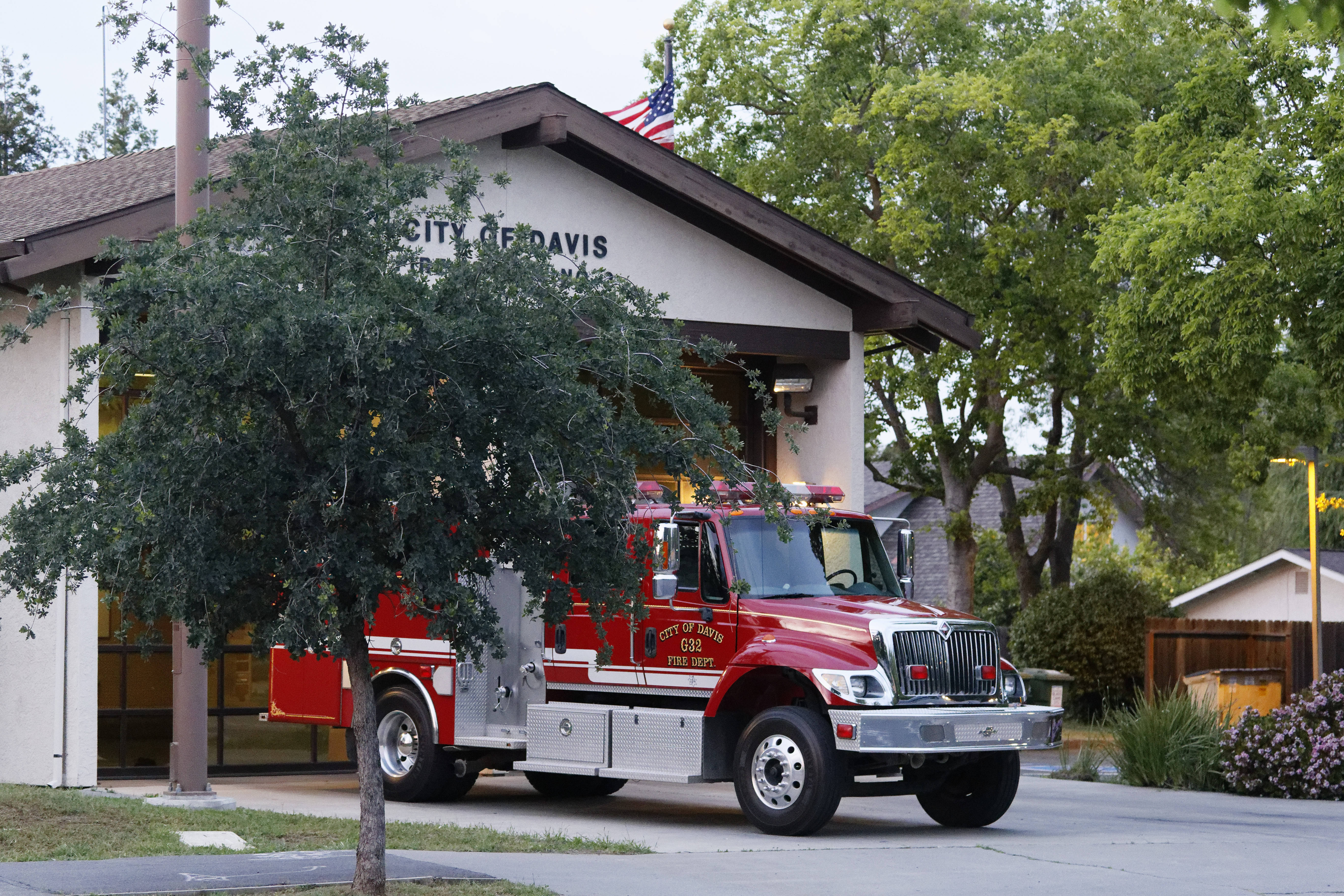Author: Frédéric Silvestre
It was written that our 6 month stay in California was not going to be easy. After experiencing the Covid19 pandemic far from home, another threat fell on this state, as well as on the entire West Coast. This danger was however less exceptional than the outbreak of a new virus, since it is a natural phenomenon which returns every year: wildfires. This year 2020 was nevertheless exceptional since it became the record year in terms of area burned. In total, more or less 18,000 km2 (or 4% of the total area of California) of forests and shrubs went up in smoke in California alone (as the fires spread north to outskirts of Seattle). The largest fire of all was called the “August complex” because it was the merger of 38 separate fires into one huge complex. It had started on August 16 to be finally contained on … November 12, that is to say 12 weeks later.
 |
|---|
| View of a sunflower field under a yellowish sky during the August complex wildfire in Davis |
We will remember our personal experience of this wildfire. For several days and weeks, the population lived to the rhythm of air quality indicators, accessible in one click on the official website www.airnow.gov. Unfortunately, it was often at its extreme value, which made any walk outside of our home very difficult. Impossible to live without air conditioning in these conditions, with more than 40 ° C permanently and no solution to breathe a little fresh air. As the fire grew bigger and closer, the sky turned orange, at first slightly, like a beautiful sunset, but then darker and darker. All the lights were getting hot and the sun was no more than an orange silhouette that we could guess through the huge cloud of smoke and ash. The impression of entering hell was then obvious. This was further reinforced by the fall of ashes from the sky. These ashes gradually covered terraces, roads and cars, leaving behind a smell of poorly extinguished barbecue. We cannot say that we were afraid. We cannot say that we were reassured either. The fire indeed progressed very quickly and chose its direction according to the prevailing wind. In a few minutes, the fire could then get dangerously close to the houses. Only one solution then, to leave very quickly! This year 2020 will have seen the death of 31 people, but it is far from being the record. In 2018, the “Camp Fire” had raged in the north of the state and had surprised the village of Paradise in the early morning. 85 people had perished there, trapped by the flames (a very good documentary is available on Netflix https://www.youtube.com/watch?v=5KNAl23NwME).

|
|---|
| The shape of the sun through the smoke and ash clouds |
In Davis, the firefighters were reassuring. As the city was surrounded by low-flammable crops, there was little risk of being caught in the flames. However, we still had to prepare for it and pack our suitcase “just in case”. Indeed, if the situation turned badly, we had to be ready to evacuate within 5 minutes, in the middle of the night if necessary. This is what happened to the nearby town of Vacaville, the regional shopping center, as the fire had forced hundreds of people to leave their homes in the middle of the night. I admit that the first night, I had trouble sleeping. I was careful to leave the bedroom door open to make sure I could hear the firefighters if they came knocking on our door in the middle of the night. Well, I think they would have made enough noise, but we never know, with my heavy sleep … After a good week spent locked in the apartment, we were finally able to get out. The fire had stopped about fifteen miles from Davis. But the air was still of very poor quality. We then went to San Francisco for a long weekend, where the fire had not yet disturbed life, and where it was a few degrees cooler. Along the road we had to pass Vacaville, and it was impressive to see the bushes and a few houses burnt down on either side. Even the central highway pole was no more than a continuous line of ash.

 |
|---|
| Ashes covering roads and cars |
Most fires start as a result of lightning, which is very common in summer. That year, there were almost 10,000 in California! Fortunately, most fires remain inconspicuous. But sometimes it gets out of hand and destroys thousands of hectares. This also happened during the austral summer 2019-20 in Australia. Everyone remembers the images of koalas and other burnt kangaroos. In total, the number of animals killed or displaced by this gigantic fire is estimated at 3 billion (it devastated 97,000 km2). And we only count here the vertebrates since it is impossible to count the insects, spiders and other invertebrates impacted by the flames. Scientists estimate that these Australian fires have caused a 14% increase in the number of endangered species which, in a single season, is immense. Gigantic is also the quantity of CO2 dissipated in the atmosphere following the combustion of vegetation. The fires in 2019-20 released 80 times more CO2 than what is observed during a normal season. And if it is generally accepted that the CO2 emitted by fires is recaptured when the vegetation grows again, it is legitimate to wonder whether this is also the case with mega-fires. These gigantic fires are characterized by their intensity, size, duration and uncontrollable size. And if forest fires have always existed, in recent years we have witnessed an increase in the frequency of these mega-fires, which has led some scientists to reclassify our era as the pyrocene (by analogy with the Anthropocene).
 |
|---|
| Over active animals during wildfires |
When a natural disaster occurs, we look for those responsible against whom the insurance companies can turn. In the case of the fires that we experienced in California, we were surprised to see the battle that was taking place between the Democratic camp of Governor Newsom, and the Republican camp of President Trump. For the first, the frequency and intensity of mega-fire is the result of global warming and only a drastic reduction in greenhouse gas emissions will be able to stop the repetition of these tragedies. For the second, it is the mismanagement of forests and the bush which is the main culprit. On the side of scientists, the two explanations are not exclusive and it is likely that they are both involved. In any case, it is a safe bet that such events will happen again and again, with catastrophic consequences for both humans and biodiversity. Moreover, the summer of 2021 has also just shown us a new example of the blaze of the planet, this time with many European regions also affected. In California, if the total area burned was less than in 2020, this time it affected the forests of giant sequoias, these magnificent thousand-year-old trees living in the Sierra Nevada. Images showing General Sherman, the largest living organism (in biomass) on the planet, protected in aluminum have toured the world. Throughout his 2000 years of life he has endured more than this, and this time again he survived this season of fire. Hopefully it’s not just a reprieve.
 |
|---|
| Davis firefighters truck |
| Video taken on the I80 between Davis and San Francisco, at Vacaville, after the wildfire |
Bibliography:
- Nimmo et al. 2021. Welcome to the Pyrocene: Animal survival in the age of megafire.
- Keeley and Syphard 2019. Twenty-first century California, USA, wildfires: fuel-dominated vs. wind-dominated fires
- Crippa et al. 2020. Fossil CO2 emissions of all world countries - 2020 Report
- Dickman 2021. Ecological consequences of Australia’s “Black Summer” bushfires: Managing for recovery
- Hamideh et al. 2021. Wildfire impacts on education and healthcare: Paradise, California, after the Camp Fire